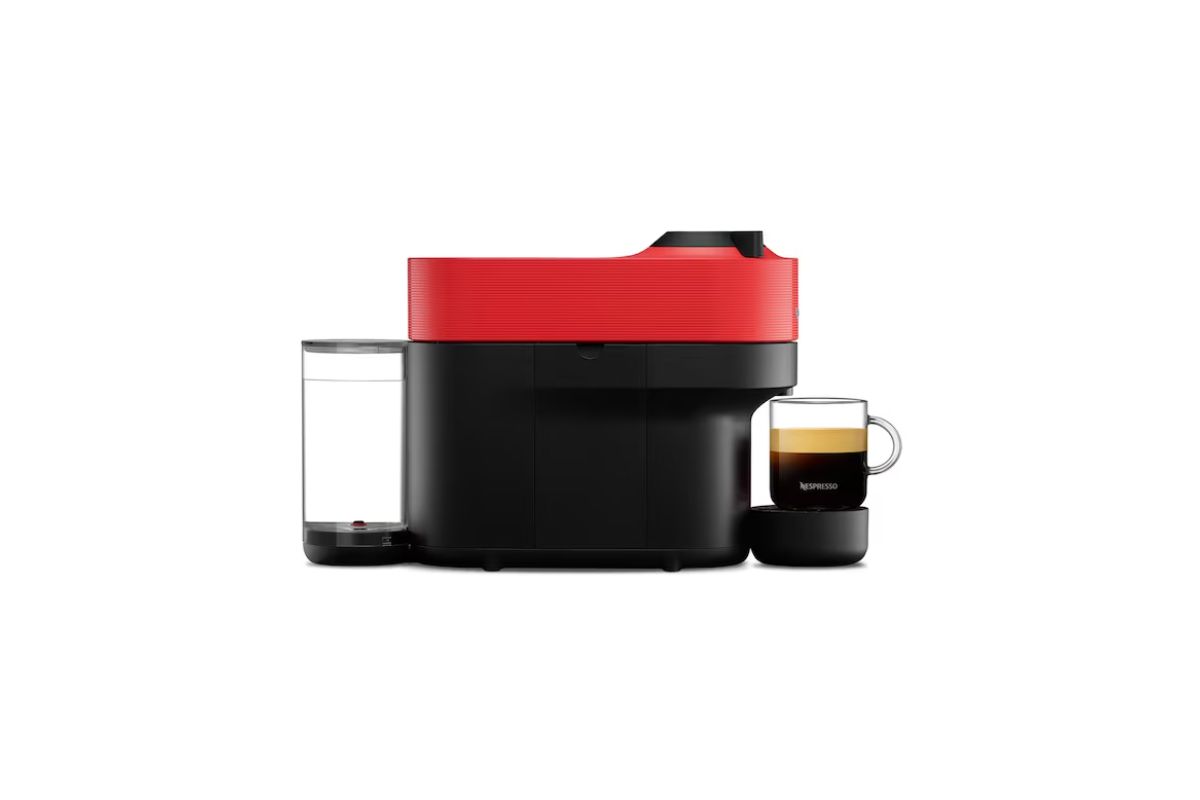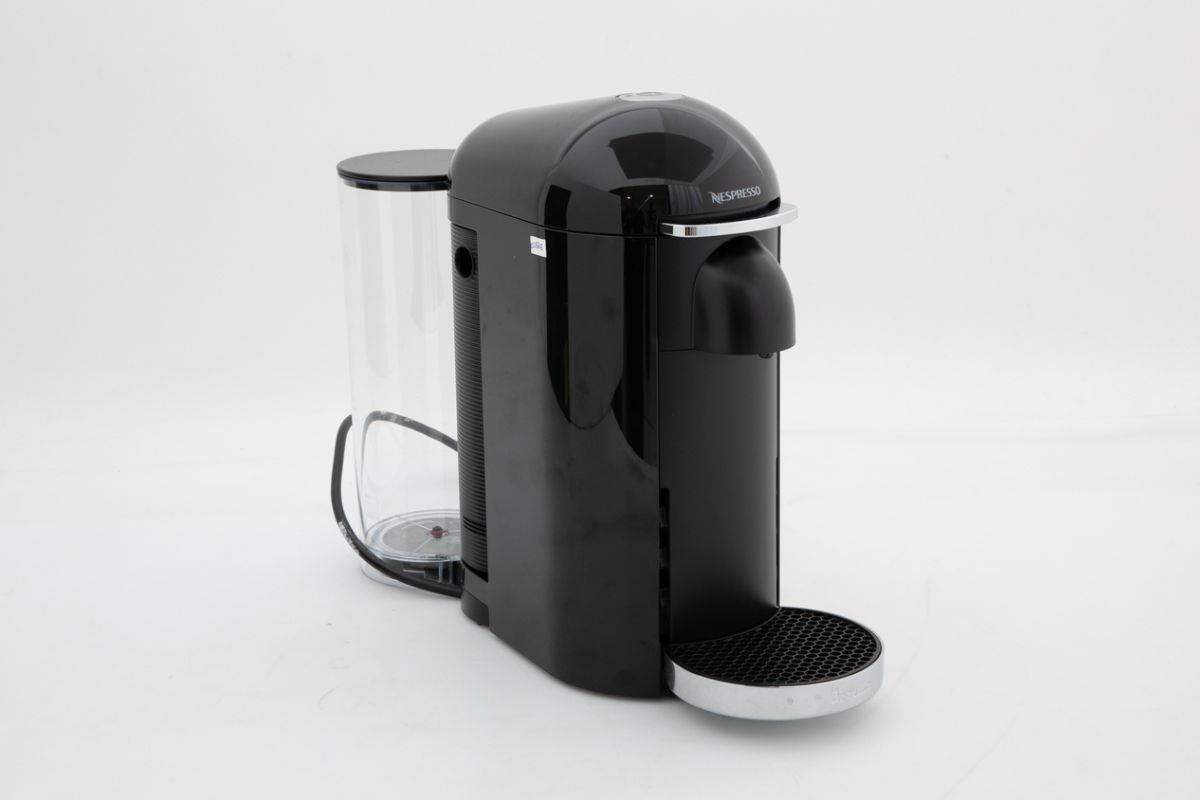In the realm of beverage lovers, a Nespresso machine is a coveted contraption that promises to deliver a flawless cup of coffee with each press of a button. Like a well-crafted symphony, it orchestrates the brewing process with precision, extracting the flavors and aromas that awaken the senses.

However, even the most harmonious of machines can experience disharmony, manifesting in the form of leaks. These leaks not only disrupt the performance of the machine but also pose potential safety hazards. Therefore, it becomes imperative for users to understand the causes behind this leakage and take necessary measures to rectify it.
This article aims to explore the underlying factors that contribute to the leakage of Nespresso machines and provides a comprehensive guide on troubleshooting and maintenance. By delving into the intricacies of this issue, users can ensure the safety of their machines and savor the symphony of flavors without any interruptions.
Key Takeaways
- Regular cleaning and maintenance, including descaling, is essential to prevent blockages and debris that may cause leaks.
- Inspecting and tightening loose or improperly fitted water tank lids, drip trays, and other components can help identify and resolve leaks.
- Faulty pressure valves and damaged or misaligned coffee capsule compartments can result in water seeping out during brewing.
- Identifying and replacing faulty seals or gaskets is crucial for preventing leaks and maintaining machine integrity.
Identify the Source of the Leak
The identification of the source of the leak in the Nespresso machine is of utmost importance as it elicits a sense of urgency and concern among users. Understanding where the leak originates from is crucial for addressing the issue effectively and ensuring the safety of the users.
To identify the source of the leak, users should first inspect the machine thoroughly. They should start by checking the water tank and its connections. A loose or improperly fitted water tank lid or a damaged seal could result in water leakage.
Additionally, examining the drip tray and its connection to the machine is vital, as any misalignment or damage can lead to leaks.
Furthermore, users should inspect the pressure valve and the coffee capsule compartment. A faulty pressure valve can cause excessive pressure, leading to leaks. Similarly, a damaged or misaligned coffee capsule compartment can result in water seeping out during the brewing process.
Identifying the source of the leak requires a careful examination of various components of the Nespresso machine. By checking the water tank, drip tray, pressure valve, and coffee capsule compartment, users can determine where the leak originates from. This knowledge will enable them to move on to the next step of checking for loose or damaged parts.
Check for Loose or Damaged Parts
Inspecting for any loose or damaged components is a crucial step in troubleshooting a malfunctioning Nespresso coffee maker. By carefully examining the machine, you can identify potential issues and prevent further damage or accidents.
Here are two sub-lists outlining what to look for:
- Loose Parts:
- Check the water tank: Ensure that it is securely attached and properly aligned with the machine. A loose water tank can lead to leaks.
- Inspect the drip tray: Make sure it is properly inserted and not loose. A loose drip tray can cause water to overflow and leak onto the countertop.
- Damaged Parts:
- Examine the capsule compartment: Look for any cracks or damage that may affect its functionality. A damaged compartment can result in improper sealing and leakage.
- Inspect the rubber seals: Check the seals on the water tank, capsule compartment, and brewing unit for any signs of wear or tear. Damaged seals can cause leaks during the brewing process.
By proactively checking for loose or damaged parts, you can ensure the safe operation of your Nespresso machine. Regularly maintaining and cleaning your machine is also essential to avoid potential issues.
Transitioning into the next section, it is important to clean and maintain your Nespresso machine regularly to prevent any build-up or blockages that may lead to leaks.
Clean and Maintain Your Nespresso Machine Regularly
Regular maintenance and cleaning of your Nespresso coffee maker is crucial to prevent the accumulation of debris or blockages that could potentially result in water leakage. By following a regular cleaning routine, you can ensure that your machine continues to function optimally and avoid any potential safety hazards.
Cleaning your Nespresso machine involves several steps to ensure thorough maintenance. First, remove any leftover coffee capsules and empty the drip tray and used capsule container. Next, use a soft, damp cloth to wipe the exterior surfaces of the machine, taking care to remove any coffee stains or residue. It is important to avoid using abrasive cleaners or scouring pads, as they can damage the machine.
Cleaning the internal components of the Nespresso machine is equally important. Refer to the manufacturer’s instructions for specific guidance on cleaning the water tank, brew unit, and nozzle. Regular descaling of the machine is also necessary to remove mineral deposits that can affect the performance of the machine and potentially cause leaks.
By regularly cleaning and maintaining your Nespresso machine, you can ensure that it continues to operate smoothly and minimize the risk of water leakage. This will help to prolong the lifespan of your machine and ensure the safety of its operation. Moving forward, it is important to consider the correct water level and temperature to further enhance the performance of your Nespresso machine.
Use the Correct Water Level and Temperature
Optimizing the water level and temperature is paramount for achieving the perfect brew and maximizing the performance of your Nespresso coffee maker. To ensure safety and efficiency, it is crucial to adhere to the recommended water level indicated by the manufacturer. Adding too little water may result in an under-extracted and weak coffee, while adding too much water can lead to overflow and potential damage to the machine.
Additionally, maintaining the correct temperature is essential for extracting the optimal flavors from your coffee grounds. Nespresso machines are designed to heat the water to an ideal temperature range, typically between 195°F and 205°F, to ensure proper extraction without scorching the coffee.
To optimize the water level and temperature of your Nespresso machine, follow these guidelines:
- Always fill the water tank up to the recommended level indicated by the manufacturer.
- Allow the machine to heat up fully before brewing to ensure the water reaches the desired temperature range.
- If your machine has temperature control settings, adjust them according to your preference and the specific coffee blend you are using.
By following these guidelines, you can ensure that your Nespresso machine operates efficiently and produces high-quality coffee.
In the next section, we will discuss the importance of replacing faulty seals or gaskets to prevent leaks and maintain the optimal performance of your machine.
Replace Faulty Seals or Gaskets

Replacing faulty seals or gaskets is crucial for maintaining the integrity of your coffee maker and preventing potential issues. Seals and gaskets play a vital role in creating a watertight seal between different components of the Nespresso machine, ensuring that water flows only where it is intended to and preventing leaks.
Over time, these seals and gaskets may wear out or become damaged, resulting in water leakage during the brewing process. To replace faulty seals or gaskets, it is important to identify the specific components that require attention. Inspect the machine carefully, looking for any signs of wear or damage on the seals or gaskets.
Once identified, carefully remove the old seals or gaskets and replace them with new ones, following the manufacturer’s instructions. By replacing faulty seals or gaskets, you can prevent water from leaking out of your Nespresso machine and potentially causing damage to other components or creating safety hazards. It is essential to ensure that the replacement seals or gaskets are of high quality and compatible with your specific Nespresso model.
In the subsequent section, we will discuss the importance of contacting Nespresso customer support for assistance in cases where replacing seals or gaskets does not resolve the leaking issue.
Contact Nespresso Customer Support for Assistance
Contacting Nespresso customer support for assistance can be beneficial when experiencing issues with the seals or gaskets of your coffee maker that have not been resolved by replacement. Nespresso customer support is equipped with knowledgeable professionals who can provide guidance and solutions to address your concerns effectively. By contacting them, you can ensure that you receive accurate information and appropriate guidance in dealing with the leaking issue.
In addition to seeking assistance from Nespresso customer support, it is crucial to prioritize safety when dealing with a leaking Nespresso machine. Leaks can potentially lead to electrical hazards or water damage, making it essential to take proper precautions. It is advisable to unplug the machine and avoid using it until the issue is resolved. This will help reduce the risk of accidents or further damage.
To evoke emotion and emphasize the importance of safety, a table illustrating potential risks and their consequences can be included:
| Risk | Consequence |
|---|---|
| Electrical hazard | Risk of electric shock or fire |
| Water damage | Potential damage to property or other appliances |
| Slippery surface | Increased risk of falls or injuries |
By contacting Nespresso customer support and prioritizing safety, you can ensure a prompt and appropriate resolution to the leaking issue while safeguarding yourself and your surroundings.
Frequently Asked Questions
How do I identify the source of the leak in my Nespresso machine?
To identify the source of a leak in a Nespresso machine, conduct a systematic inspection of the machine’s components such as the water reservoir, seals, and brewing unit. Look for signs of damage, improper assembly, or wear and tear.
What should I do if I find any loose or damaged parts in my Nespresso machine?
If any loose or damaged parts are found in a Nespresso machine, it is crucial to immediately stop using it and unplug it from the power source. Contact the manufacturer for further assistance and avoid attempting any repairs yourself to ensure safety.
How frequently should I clean and maintain my Nespresso machine to prevent leaks?
To prevent leaks in a Nespresso machine, it is recommended to clean and maintain it regularly. This includes descaling every 2-3 months, cleaning the water tank and drip tray weekly, and checking for any loose or damaged parts during the cleaning process.
What water level and temperature should I use to avoid leaks in my Nespresso machine?
To avoid leaks in a Nespresso machine, it is recommended to maintain a proper water level and temperature. It is important to follow the manufacturer’s guidelines regarding water level and temperature settings for safe operation and prevention of leaks.
When should I consider replacing the seals or gaskets in my Nespresso machine to prevent leaks?
Replacing the seals or gaskets in a Nespresso machine should be considered when leaks occur despite proper water level and temperature. This preventive measure ensures the integrity of the machine, minimizing risks and maintaining safety standards.
Conclusion
In conclusion, it is essential to promptly address and resolve any leaks in your Nespresso machine. By identifying the source of the leak and checking for loose or damaged parts, you can effectively prevent further damage.
Regular cleaning and maintenance, along with using the correct water level and temperature, will help maintain the machine’s functionality. In case of faulty seals or gaskets, it is recommended to replace them.
Finally, contacting Nespresso Customer Support for assistance can provide further guidance and support.
Can we afford to neglect the maintenance of our Nespresso machines and risk compromising their performance and durability?
Related articles: